Conveying the Details
How conveyors are evolving today to meet modern needs of food processors
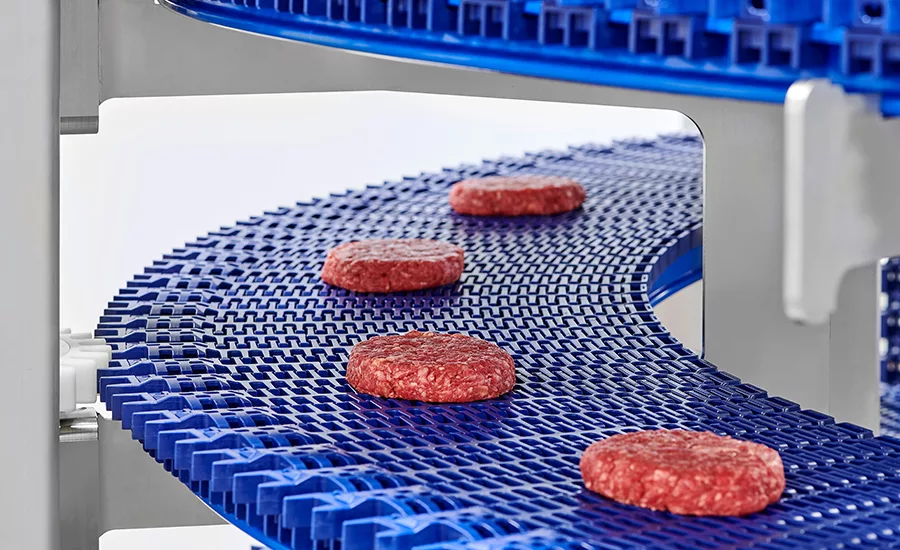
Photo courtesy of SideDrive Conveyor Co.
At a glance, it might seem that most conveyors are doing their job as long as they shuttle items from one point to another. However, a number of other elements must be present for a conveyor to be efficient and productive in a food-processing environment, like hygienic design, cleanability, versatility, updated technology and more.
Ongoing demand for food production is keeping many processing facilities at or near capacity as we start 2022, and that means operators are asking more of conveyors than ever before. Here, we highlight three areas where conveyors have evolved in recent years to adapt to the unprecedented use put upon them today.
Versatility
“In the past, a conveyor was a simple vessel used to move product from one point to another. Today, that conveyor may be asked not only to move the product but also manipulate it in some manner—anything from flipping it over, reducing the size, or ensuring it’s dropped off at a precise location as part of the overall process,” says Barry Whitman, global sales manager at Precision Food Innovations (PFI). “We’re constantly asking during a design, ‘How many different ways can this be used?’”
Conveyor versatility is a must-have for processors in 2022. The ability to integrate with other equipment along a food processing line is essential, as well as adapting to different products as processors add new SKUs or focus on creating alternative items due to ingredient or material shortages.
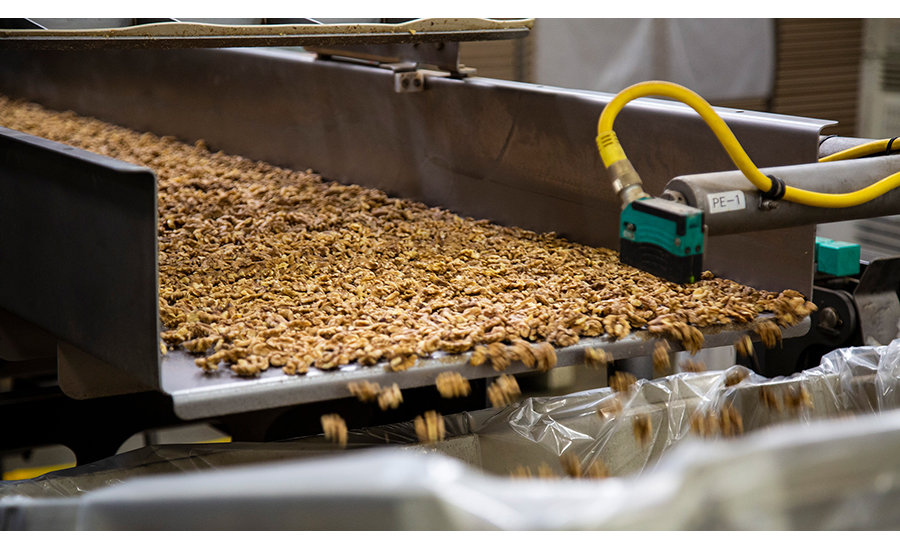
“Conveyors today have become integral components in all phases of food processing and packaging,” says John Kuhnz, VP of engineered solutions at Dorner. “The right conveyor supplier is looking at a total line solution. They want to know what’s occurring upstream and downstream of the conveyor to determine how their sanitary platform can best compliment the entire line.”
Kevin Pecha, director of food sales, AZO Food, adds that, “manufacturers want the flexibility to run any product on any line at any time. Often existing material handling systems are incapable of meeting these future demands.”
New materials and methods used to manufacture conveyors today allow for more flexible designs, and can be customized for small-footprint facilities where space is at a premium. “Laser CNC cutting, material chemistry, makeup—primarily plastics—along with parametric design has improved the ability to quickly release standard designs, which brings down cost and lead time for customers,” notes Kevin Mauger, president of SideDrive Conveyor Co.
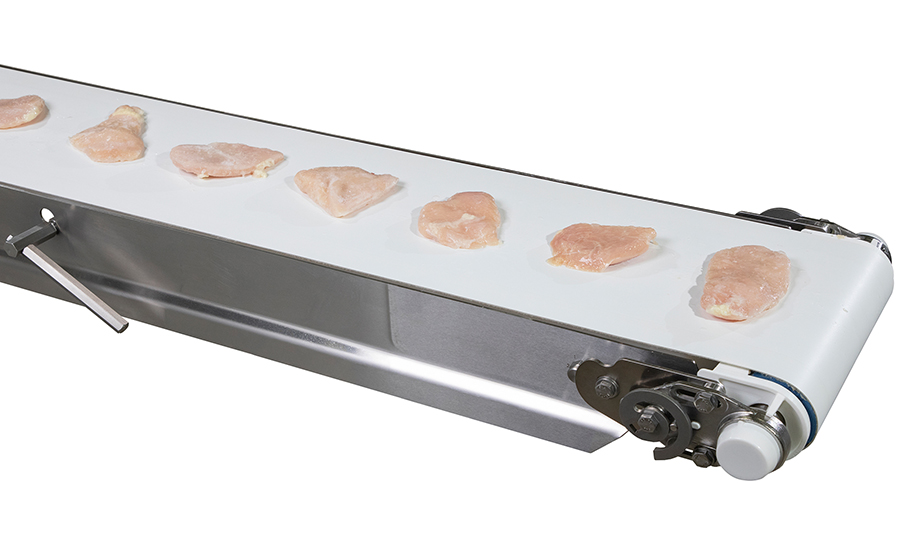
Sanitation
Sanitary design for conveyors has also seen accelerated evolution in recent years, partly driven by the rollout of the Food Safety Modernization Act (FSMA) by the FDA. “For belt conveyors, positive drive versus friction drive and modular belting has evolved significantly, delivering vastly improved sanitation and food safety, and belt tracking,” says Gary Schlitz, GM at PFI.
Kuhnz adds that, “it wasn’t long ago that a stainless steel conveyor constituted a sanitary platform in some people’s eyes. Now, much of the marketplace is closely examining a conveyor’s sanitary features and benefits, and evaluating how those attributes are going to integrate into their facilities. Eliminating catch points to prevent water and particulate from collecting in the food zone is just one engineering example that goes into making a conveyor a true sanitary platform.”
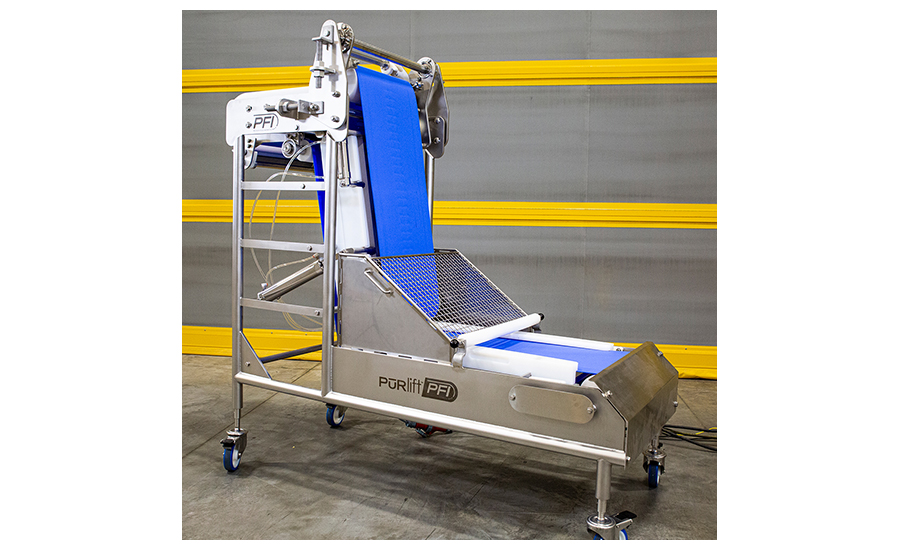
As for actual cleaning of food conveyors, downtime means lost productivity—particularly in today’s fast-paced processing environments—so several time- and labor-saving elements are being been built into conveyors for quick and effective sanitation. This includes conveyors that can be taken apart quickly, cleaned and reassembled without tools, and others with a completely open design that hides nothing. “The easier it is to see what you are cleaning, the easier it is to do effectively,” observes Mauger.
“Maximizing productivity really starts with increasing uptime,” Kuhnz says, “so you reduce the time needed to disassemble, sanitize and put the conveyor back into operation.”
Technology and Labor Savings
The ongoing labor crunch in the industry has necessitated technological innovation in conveyors to eliminate some of the work traditionally handled by employees, while expanding the capability of conveyors to multitask in a processing facility.
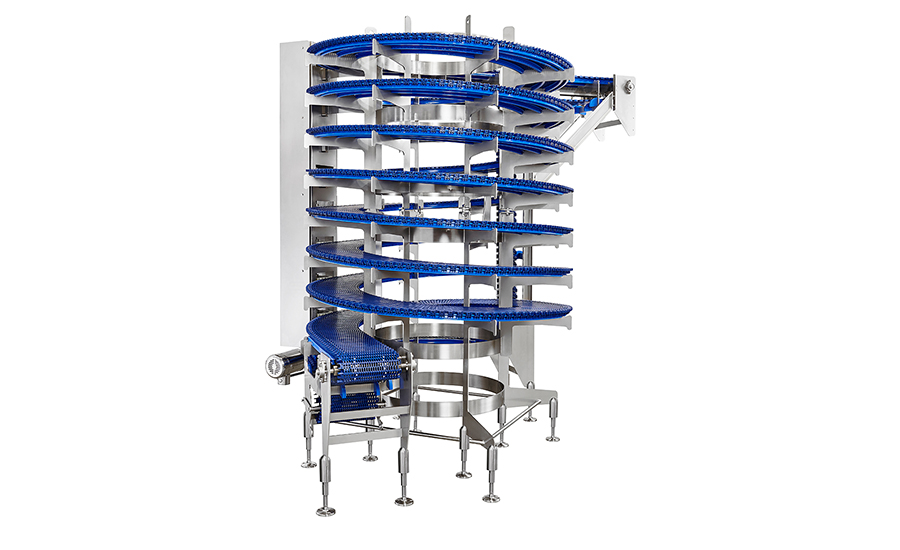
“Hand-weighing ingredients and manually charging mixers is labor intensive and assumes that a qualified operator will always be present. Workers leaving, failing to report or out sick has created a dynamic environment where some production lines are idled because of the labor shortage. By automating more mundane operations, producers can reduce the number of people needed to keep production lines running,” says Pecha, adding that track-and-trace technology is another area evolving for conveyors as demand for food traceability increases, but will require some facilities to upgrade their operating control systems to add this functionality.
Technology is also enabling processors to monitor conveyors and establish predictive maintenance schedules, while improving their safety due to “advances like 24VDC control circuits and Safety PLC zones. We’re seeing more sensors and technology that collect and analyze efficiency and maintenance data. Also, more robots and cobots are working on processing lines around conveyors,” says Schlitz.
Kuhnz concludes that, “as the workforce turns over and younger people are stepping into roles of engineering, purchasing and maintenance, they’re definitely cognizant of how technology can influence their day-to-day operations. This includes drives and motors that use less energy to operate a conveyor system, and belts that are more conducive to sanitary environments by being easier to clean and maintain,” he says. “Today’s conveyor systems are designed for a more diverse workforce and are simpler to operate and clean, as opposed to older models that were more complex in design. Conveyor technology is really adapting to the next generation of food processing professionals.”
Looking for a reprint of this article?
From high-res PDFs to custom plaques, order your copy today!






